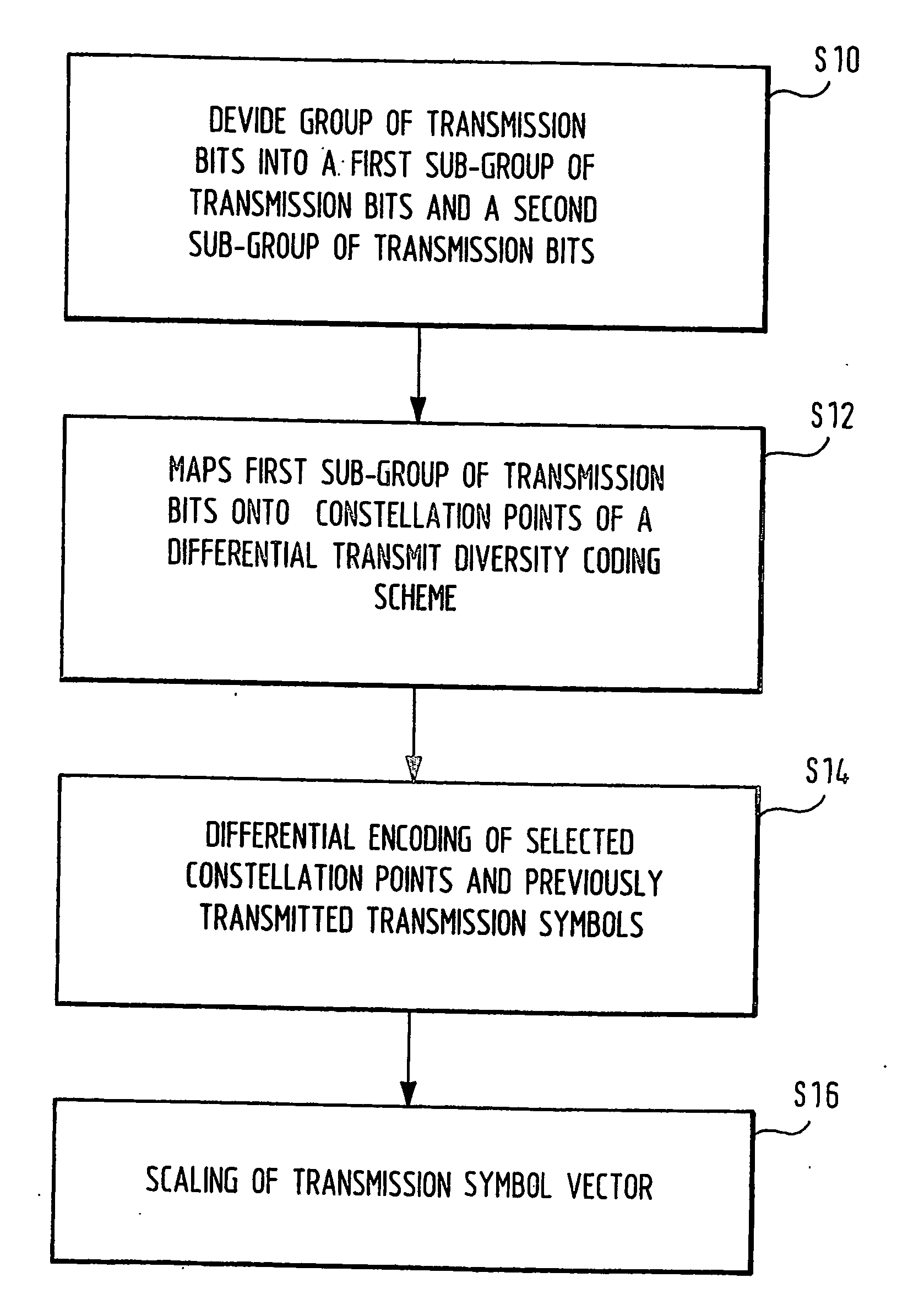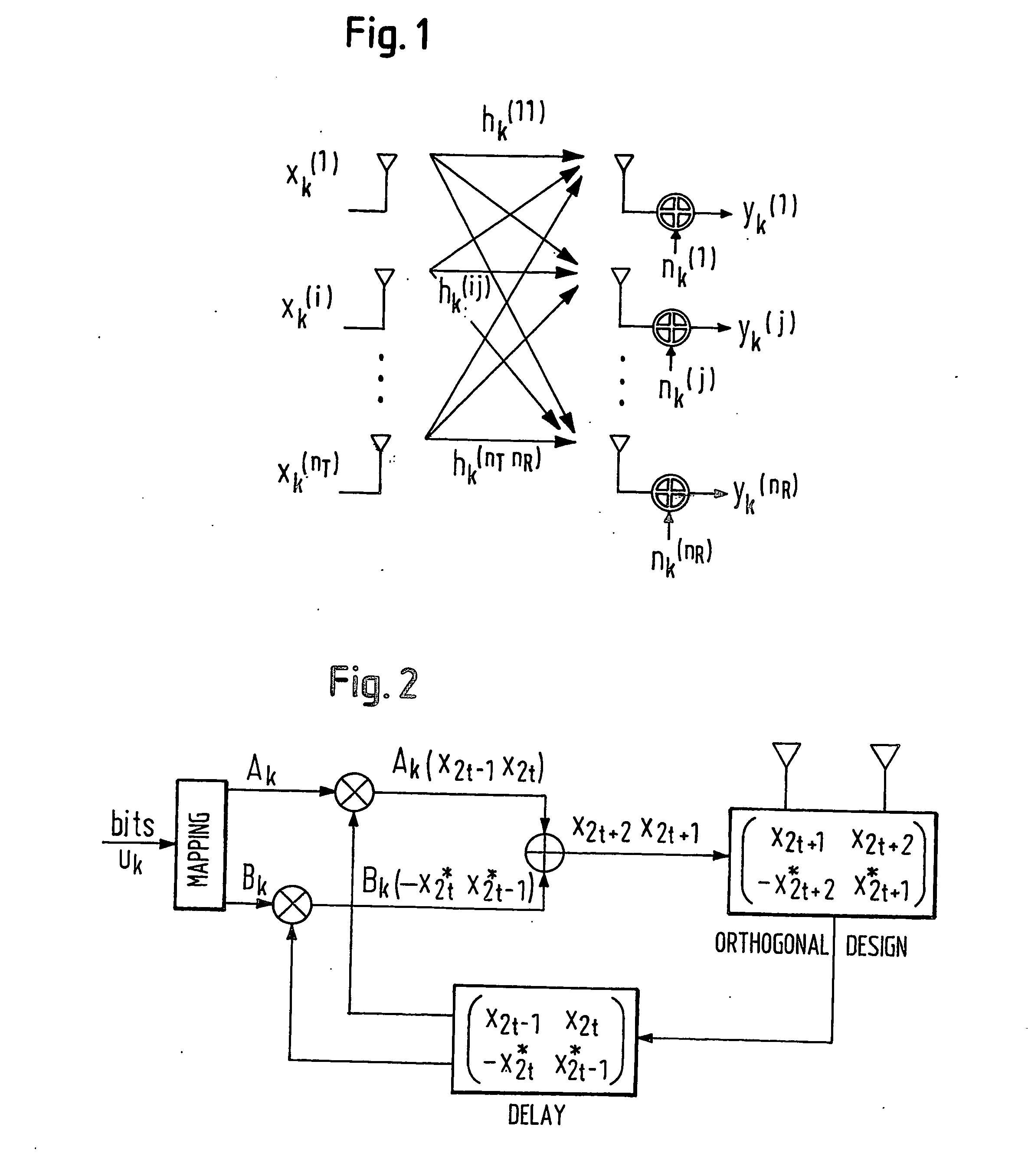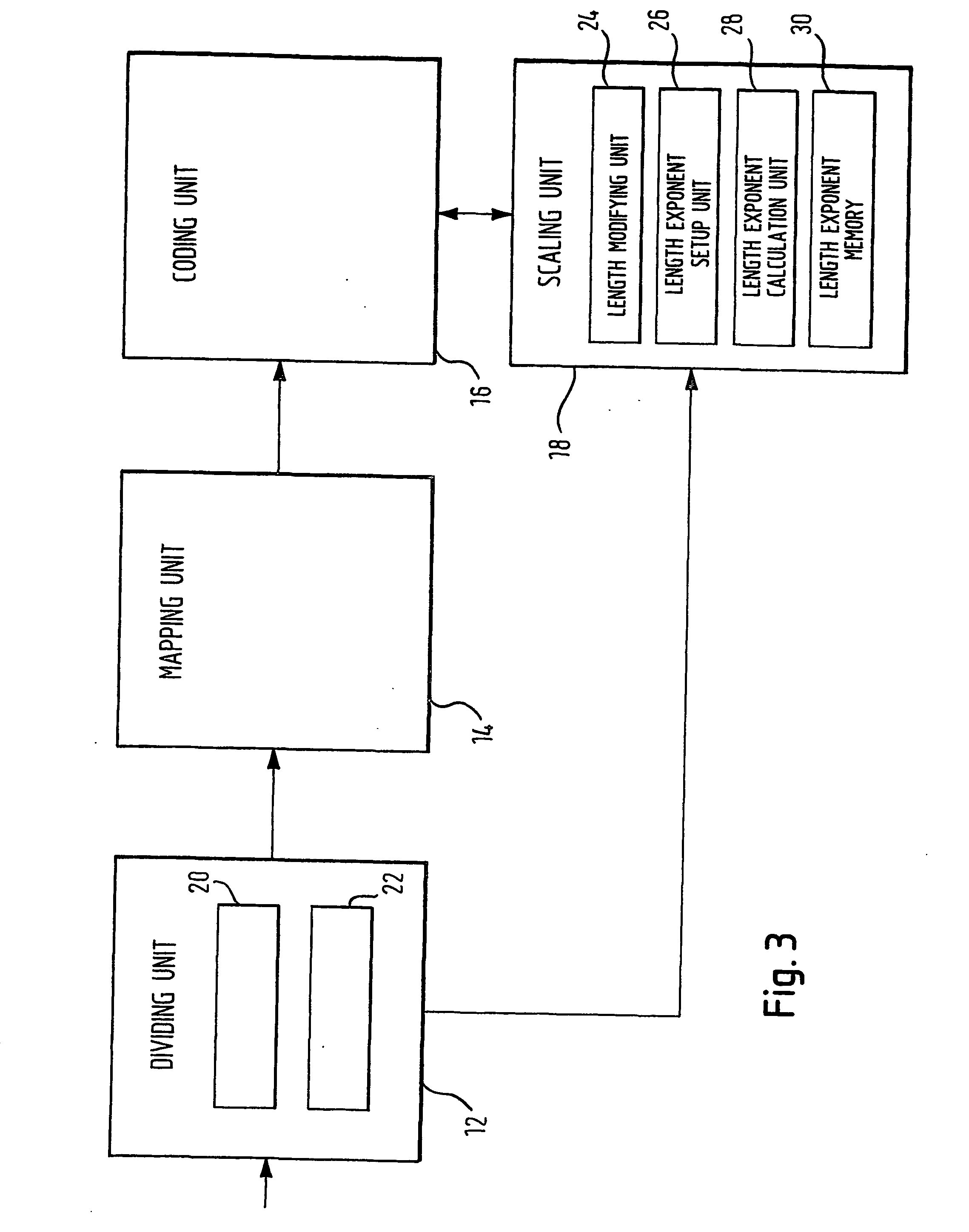Differential multiple-length transmit and reception diversity
a transmit and reception diversity and multi-length technology, applied in the field of differential transmit diversity and related diversity reception, can solve the problems of orthogonal design limitation of unit length transmission symbol vectors, significant problem in transmission channel estimation, etc., and achieve the reduction of detection complexity, the number of comparisons with possible transmission symbols at the receiver side is significantly reduced, and the range of data rate is flexible
- Summary
- Abstract
- Description
- Claims
- Application Information
AI Technical Summary
Benefits of technology
Problems solved by technology
Method used
Image
Examples
Embodiment Construction
[0050] In the following, the best mode and preferred embodiments of the present invention will be explained with reference to the drawing. Initially, some basic concepts underlying differential multiple-length transmit diversity and related diversity reception will be explained for a better understanding of the present invention.
Channel Model
[0051]FIG. 1 shows a schematic diagram of a flat fading multiple input multiple output channel model as basis for differential multiple-length transmit diversity and related diversity reception according to the present invention.
[0052] As shown in FIG. 1, a flat fading multiple-input-multiple-output (MIMO) channel describes a system with nT transmit antennas and nR receive antennas. The channel gain from transmit antenna i to receive antenna j at time k is denoted by hk(ij). Further, the symbol transmitted from antenna i at time k is denoted by xk(i). The observed value at receive antenna j at time k is given by yk(j)=∑i=1nThk(ij)xk(i)+nk(...
PUM
| Property | Measurement | Unit |
|---|---|---|
| length | aaaaa | aaaaa |
| transmission bits | aaaaa | aaaaa |
| transmission | aaaaa | aaaaa |
Abstract
Description
Claims
Application Information
 Login to View More
Login to View More - R&D
- Intellectual Property
- Life Sciences
- Materials
- Tech Scout
- Unparalleled Data Quality
- Higher Quality Content
- 60% Fewer Hallucinations
Browse by: Latest US Patents, China's latest patents, Technical Efficacy Thesaurus, Application Domain, Technology Topic, Popular Technical Reports.
© 2025 PatSnap. All rights reserved.Legal|Privacy policy|Modern Slavery Act Transparency Statement|Sitemap|About US| Contact US: help@patsnap.com



